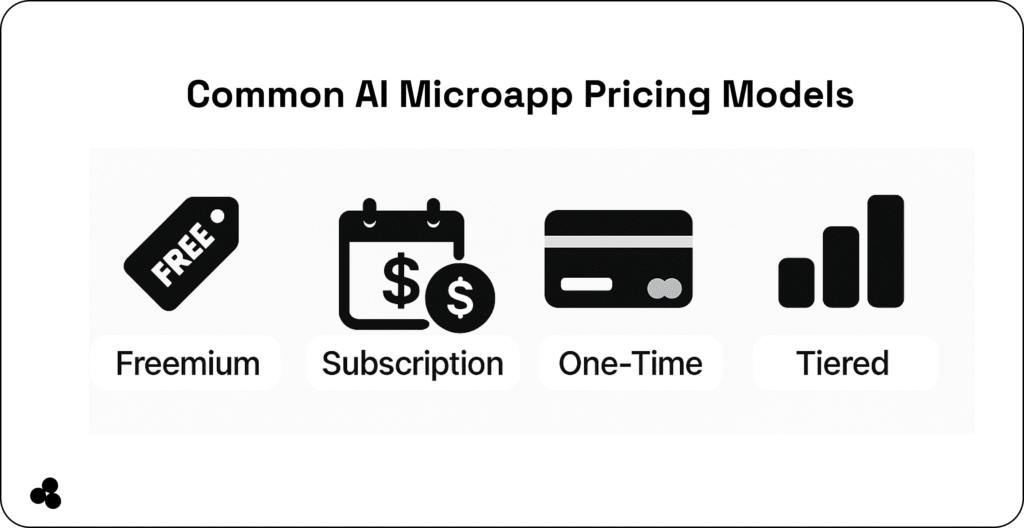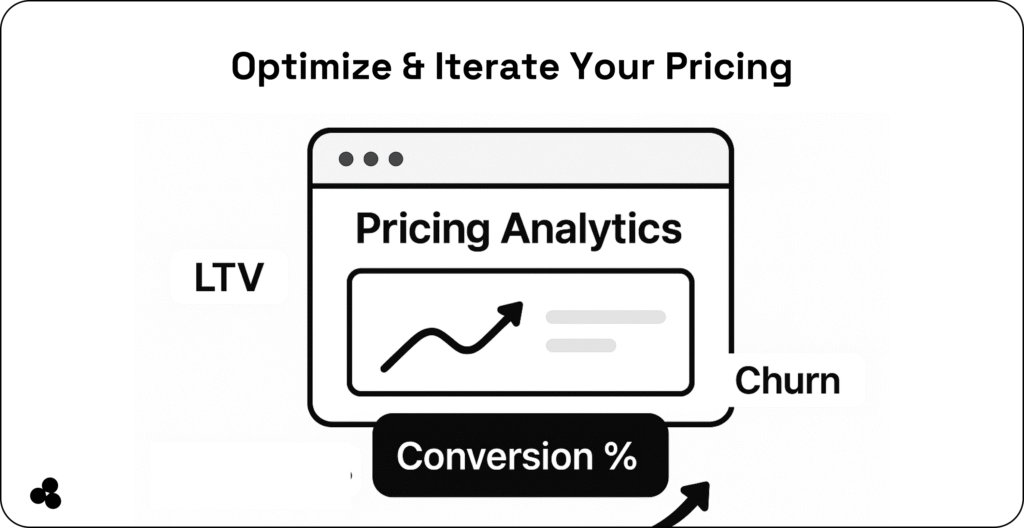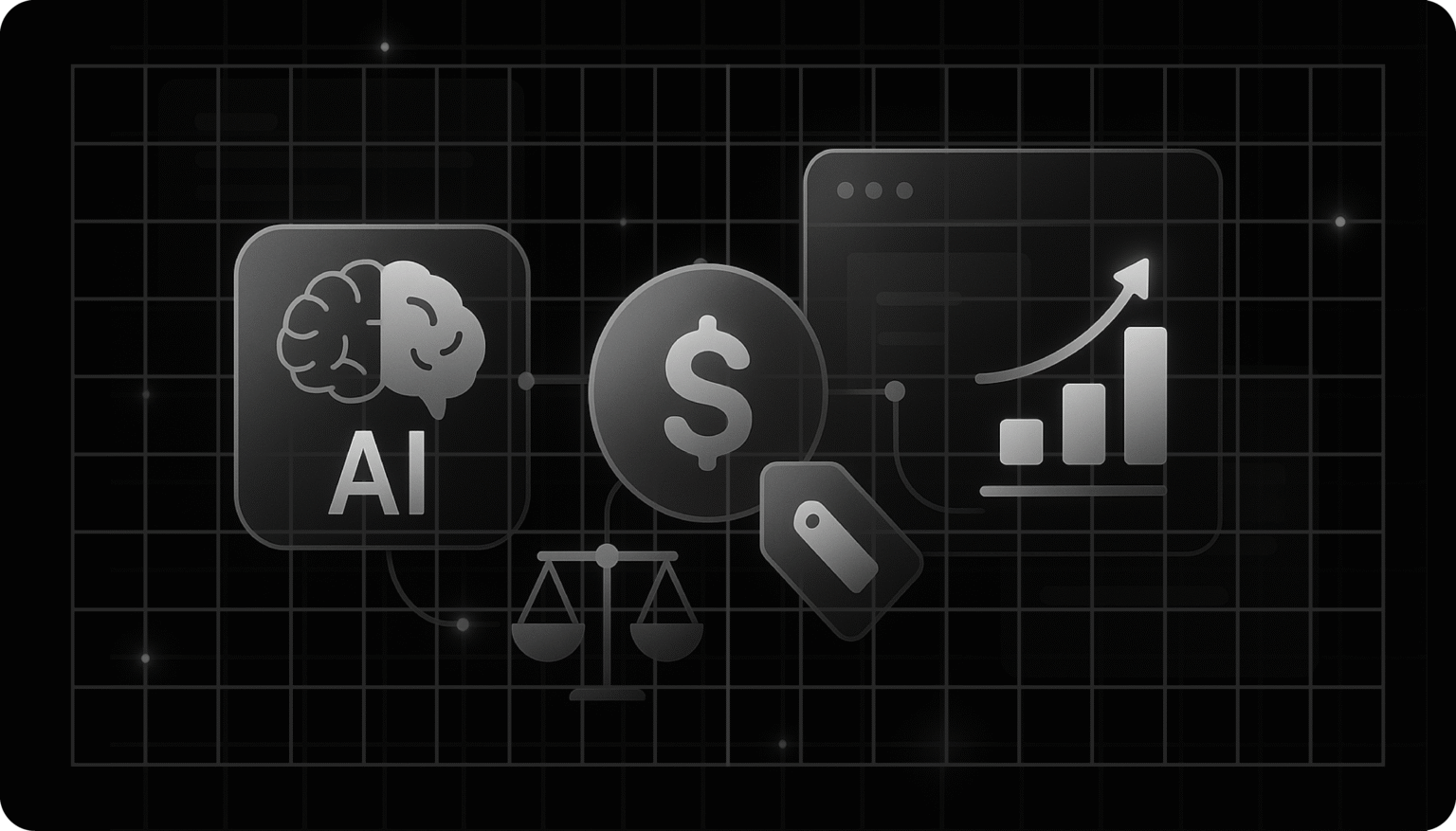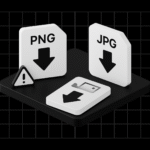You can build the smartest AI app in the world, but if you price it wrong, you’ll lose users before they even give it a shot.
Knowing how to price your app is critical to turning your creation into a sustainable product. In the world of AI microapps, pricing isn’t just a business decision; it’s your first impression.
Nail it, and users convert faster, stick around longer, and even become your most loyal advocates. Miss the mark, and you risk low adoption, high churn, and wasted potential.
Whether you’re shipping your first MVP or refining a polished tool, your app pricing strategy shapes everything from user perception to long-term revenue.
Join us for a developer-first breakdown of what works, from models to testing strategies, so you can launch with confidence and optimize your app price.

Why Pricing Matters so Much (Psychology & Revenue)
Pricing isn’t just about covering your costs; it’s a tool that shapes value and influences user psychology. The price you set communicates the value of your app. Too low, and users might question its quality; too high, and you risk alienating potential customers.
Research shows that freemium models, offering basic services for free while charging for premium features, can enhance user retention. Subscription and tiered pricing models also influence behavior and increase long-term engagement.
💬 Why is pricing so critical for apps? Your pricing communicates value. Set it right, and users adopt quickly. Set it wrong, and adoption slows or fails.
Worthy Read:
- 👉 Check out our article on how you can make your own performance review software.
- 👉 Develop a quiz generator
- 👉 How to Build and Sell Niche Tools
- 👉 8 Best Warehouse Management Tools
How to Price Your App: Choosing a Pricing Model (Freemium, Subscription, or One-Time?)
Selecting the right app pricing model is foundational to success. Here’s a quick guide:
| Pricing Model | Best For | Pros | Cons |
|---|---|---|---|
| Freemium | Early users & engagement | Low barrier, high adoption | May undercut revenue |
| Subscription | Long-term value & recurring revenue | Predictable income, retention | Requires continuous updates |
| One-Time | Simple apps | Immediate revenue | No recurring income |
| Tiered | Multiple user needs | Upsell opportunities | Needs clear value distinctions |
| Usage-Based | Variable user activity | Aligns cost with value | Complexity in tracking |
💬 Which pricing model is best for AI apps? For apps offering continuous updates, a subscription works well. Simple, static tools may benefit from one-time or freemium models.
👉 Check out how to market your AI tool and AI App.

Competitive Analysis: How Much Should You Charge?
Understanding competitors’ pricing helps you position your app effectively:
- Identify apps with similar functionality that target your audience.
- Analyze their pricing models, tiers, and features.
- Compare value propositions: are you offering extra features, better UX, or superior support?
- Adjust your app pricing strategy accordingly.
💡 Tip: If you’re entering a crowded market, consider a competitive entry price to attract your first users.
👉 Worthy read: How You Can Earn a Passive Income as a Developer. l Enterprise Apps vs Microapps
How to Price Your App: Testing Pricing Strategies with Real Users
Even the best pricing model is only a hypothesis until validated. Try these developer-friendly strategies:
- A/B Pricing Tests – Show different price points to separate user groups to see which converts best.
- Paywall Testing – Start freemium, introduce paywall after usage thresholds. Track drop-off rates and upgrade percentages.
- Direct Feedback from Early Adopters – Surveys and analytics help measure willingness-to-pay.
- Anchor with Multiple Plans – Present three tiers to influence users toward the middle or top option.
- Use Competitor Benchmarks – Compare against alternatives to make your value obvious.
💬 How many pricing experiments do I need? Run at least 2–3 live tests or paywall experiments before finalizing your app pricing strategy.
👉 Please read our article on the five best case management software.
Optimizing Your Pricing Long-Term (Tips & Tools)
Your work doesn’t stop after launch. Pricing should evolve with your app, audience, and market.
- Track Revenue vs. Churn: Monitor Customer Lifetime Value (LTV) and cancellation rates.
- Leverage Pricing Analytics Tools: Use Microapp.io dashboards to track conversions and drop-offs.
- Introduce Value-Based Pricing: Charge based on the measurable value your app delivers.
- Iterate on Tiers: Add intermediate tiers or usage-based overages.
- Use Scarcity & Discounts Smartly: Early-bird or founders’ tiers can drive initial adoption.
- Monitor the Market: Keep pricing competitive and aligned with new entrants.
💡 Tip: Regularly revisit your app price optimization and adjust based on real data.
👉 Check why your social media scheduler should be a microapp and build one yourself.

Find Your Perfect Price Using Monetization Tools
Microapp provides built-in monetization dashboards to:
- Experiment with different pricing tiers
- Gather user feedback
- Refine your app’s pricing strategy to maximize revenue and retention.
💬 Which tools help optimize app pricing? Microapp.io dashboards, analytics software, and A/B testing tools are great starting points.
Ready to Start Growing?
Pricing your app effectively involves a blend of psychology, data, testing, and ongoing optimization.
By combining the right model, competitive analysis, and honest user feedback, you can maximize conversions, retention, and revenue.
Whether you’re iterating on your MVP, refining your tiers, or launching a new AI microapp, momentum comes from action. Start small, gather feedback, iterate, and scale.
👉 Launch, collect sign-ups, validate, and optimize your app with Microapp today — the easiest way to monetize and grow your AI tool without complexity.
💡 Tip: Track your KPIs continuously and adjust your pricing strategy based on adoption and user behavior.








